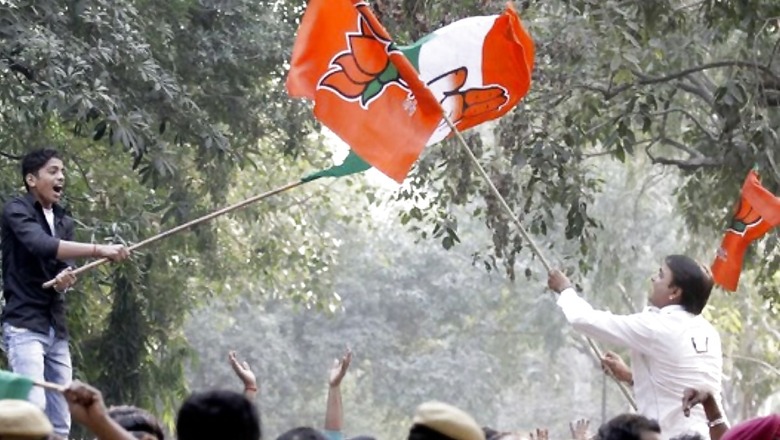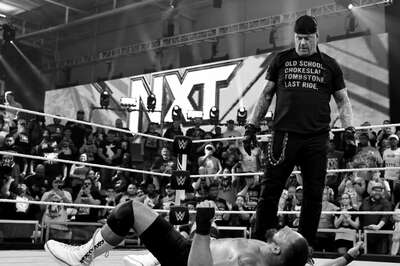
views
During the 1972 Assembly elections in Karnataka, D Devaraj Urs was the president of the State Congress. The Congress split had taken place in Bengaluru three years before and Urs was heading Congress (I) in Karnataka, headed by Prime Minister Indira Gandhi at all-India level. This faction with no big leaders was expected to lose, but Urs was confident of a big win. He knew something which most others did not know. He had called a press meet to announce the names of his party candidates. There were only a handful of media persons present. Urs read out a few names, all first-timers – M Mallikarjun Kharge, M Veerappa Moily, N Dharam Singh, etc. Some of the Bengaluru-based reporters laughed and told Urs that with green horns like these his party would definitely bite the dust. A humiliated Urs angrily told them to wait for the election results and abruptly ended the press meet without reading out rest of the names.
Urs was right. In the elections, the Devaraj Urs-led Congress swept the polls, turning the tables in Karnataka politics. It was a landmark victory in many ways. Because Urs’s Other Backward Classes (OBC), SC/STs and minorities combination did wonders and ended the hegemony of upper caste – Lingayat and Vokkaligas — in the state politics. His picks namely Kharge, Moily and Dharam Singh later became big leaders, the latter two became even Chief Ministers.
The 1972 Assembly elections heralded the arrival of OBCs in Karnataka politics in a big way. The split of the Congress created an opportunity for them to fight the elections after securing Indira Gandhi-led Congress tickets. Since Independence in 1947 to 1972, the state politics was controlled by only two castes – Lingayat and Vokkaliga — whose combined population is about 25%-30% of the total population.
The OBCs, with over 22%, were totally neglected and had little political participation. They were forced to meekly accept the rule of the upper castes. The visionary Urs changed that overnight giving political power to them.
THE ROLE OF OBCs
In the past 51 years since that election, OBCs have been playing a major role in deciding who rules Karnataka. No party can afford to ignore or upset them. Incidentally, Siddaramaiah, former chief minister and face of the Congress in Karnataka, is an undisputed leader of the OBCs, and he is being hailed as the rightful inheritor of Urs legacy, although he is originally from Janata Pariwar opposed to Urs.
Urs had a foresight and he knew he could break the monopoly of upper castes by uniting all OBCs by forging a formidable alliance with Muslims, SCs/STs. He appointed a legal expert LG Havanur to study OBCs’ socio-economic condition and submit a report. It was India’s first detailed study of OBCs and considered the best report on them till date. Havanur is divine to OBCs in the state. He was even invited by Nelson Mandela of South Africa to advise him on drafting the post-apartheid Constitution there. This report was followed by two more reports on the backward classes in the next 30 years.
According to A Ravindra, retired chief secretary to Karnataka Government, it is pertinent to recall that the erstwhile princely state of Mysore was a pioneer in taking affirmative action in favour of the backward sections of society. Over a century ago, in 1918, then Maharaja of Mysore Nalwadi Krishnaraja Wodeyar set up a committee to enquire into the grievances of non-Brahmins regarding inadequate representation in state services. The committee in its report considered backwardness more on the basis of ‘caste’ than on economic criteria and classified all non-Brahmins as backward. Since Urs, Karnataka has seen five OBC chief ministers (including Urs and Dharam Singh – who are Kshatriyas, not a backward class in rest of India).Three other chief ministers S Bangarappa, M Veerappa Moily and Siddaramaiah are truly backward class.
Among the OBCs – the Kurubas, Siddaramaiah’s caste is the single largest with about 7% of the total population. It is a pan-Karnataka caste unlike most of the OBCs who are restricted to one or two regions. Some of the OBCs are miniscule and their population won’t cross even a lakh.
AFTER EMERGENCY
After the Emergency of 1975, the Congress was wiped out across India, except Karnataka and neighbouring AP, only because the OBCs, minorities and SC/STs firmly stood by them against the upper castes.
In 1983, the Congress lost power for the first time in Karnataka. A hotchpotch alliance led by Janata Party came to power, creating history. H D Deve Gowda had led the Janata Party mainly comprising Lingayats and Vokkaligas. The Congress lost mainly because then undisputed leader of OBCs S Bangarappa had walked out of the Congress to lead the newly formed Karnataka Kranti Ranga. It split the OBC votes. The OBCs returned to the Congress in 1989, which the party swept by winning 181 seats in the 224-member house. The grateful Congress rewarded them with two chief ministers (Bangarappa and Moily during that term).
In the mid-2000s Siddaramaiah emerged as the tallest OBC leader in the state after he was thrown out of the JDS by Gowda. Siddaramaiah, who also hails from Mysore like Urs, copied his model and tried to bring OBCs, Muslims, SC/STs under one umbrella called AHINDA. That experiment clicked in the 2013 elections, and he became the Chief Minister. The other factor that helped him was B S Yediyurappa’s KJP, which took 10% of the votes, mostly Lingayat, dealing a body blow to the Bharatiya Janata Party (BJP) which he had left briefly.
RISE OF BJP
With the emergence of the BJP in the past 15 years, OBC votes have been divided in the state. The BJP has captured OBCs such as Billavas, Mogaveeras, Vishwakarmas, Kolis and others who were the hardcore Congress voters earlier. The BJP is desperately trying to shake off its Lingayat party image by wooing and promoting OBCs. The “Hindutva” card has also split OBCs in the middle, helping the BJP. The third-party JDS hardly has any OBC support because it is known as a Vokkaliga party.
Strangely, in the past 25 years, Lingayats and Vokkaligas have also been included to the OBC list, mainly because of their economic status. Muslims, Digambar Jains, Christians and Buddhists have also been included, besides these two dominant castes. But, in the elections, these castes and religions vote differently, not as OBCs. When they seek reservation in jobs and other benefits from the Government, they use the OBC card. This peculiar situation has made study of Karnataka’s caste a complex job. The Panchamasali Lingayats’ demand for a greater and better pie in the reservation under the OBC quota has already set the caste politics on fire, triggering panic in the BJP.
According to SM Jamadar, a retired IAS officer and a leader of the separate Lingayat religion movement, even though the actual Lingayat population is over 16% of the state’s total population, on paper it has dropped to alarming 9% because many sub castes among the Lingayats have mentioned their original castes in the census to avail reservation benefits.
As Lingayats and Vokkaligas are highly unlikely to vote together for one party, the OBCs hold the key to power in Bengaluru. If the BJP manages to retain its OBC votes, it can halt the march of the Congress. If it fails, with minorities, SCs/STs (a major chunk, not all), the Congress can pose a big threat to BJP.
Read all the Latest Politics News here

















Comments
0 comment